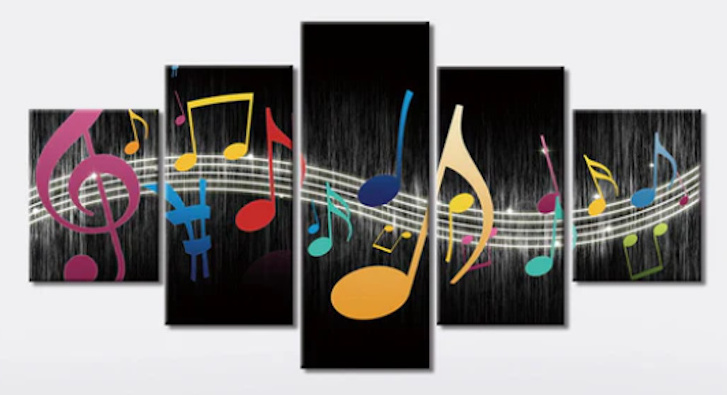
 |
|
|
|
The Evolution of Pop Music: A Journey Through Time: :Gospel Music: The Evolution of Gospel Music: The evolution of gospel music is a fascinating journey that intertwines with African American history, spiritual traditions, and the broader development of popular music. 1. Early Roots (17th-19th Century) Gospel music traces its roots to the spirituals and work songs of enslaved African Americans. These songs blended African musical traditions with Christian themes, expressing hope, resilience, and faith. Call-and-response singing, improvisation, and rhythmic clapping were key features. The Great Awakening revivals (18th and 19th centuries) helped spread these styles within Christian worship. 2. The Rise of Gospel Hymns (Late 19th-Early 20th Century) Influences from shape-note singing, camp meetings, and early hymn composers like Isaac Watts and Fanny Crosby shaped gospel hymnody. Thomas A. Dorsey, known as the "Father of Gospel Music," fused blues with religious lyrics in the 1920s and 1930s, popularizing the gospel sound. 3. The Golden Age of Gospel (1930s-1950s) Gospel quartets and choirs gained popularity, featuring rich harmonies and passionate performances. Key figures: Mahalia Jackson - Brought gospel into the mainstream with her powerful voice. The Soul Stirrers - Led by Sam Cooke, they helped bridge gospel and secular R&B. Clara Ward Singers - Brought a show-stopping, theatrical element to gospel performances. 4. Gospel's Influence on Popular Music (1950s-1970s) Gospel directly influenced soul, R&B, and rock & roll, with artists like Ray Charles and Aretha Franklin drawing from gospel roots. Contemporary Gospel emerged, blending traditional gospel with jazz, blues, and early rock. 5. Contemporary and Urban Gospel (1980s-Present) The rise of artists like Kirk Franklin, Yolanda Adams, and Donnie McClurkin brought gospel to a wider audience. Urban gospel incorporated hip-hop, R&B, and electronic elements, making it more mainstream. Mega-church culture and gospel music television shows increased gospel's global influence. 6. Gospel in the Digital Age (2000s-Present) Streaming platforms and social media have allowed independent gospel artists to reach new audiences. Gospel rap and Christian hip-hop have gained traction, blending faith-based lyrics with modern beats. The Rise of Gospel Music and Its Influences Gospel music emerged as a powerful genre deeply rooted in African American history, faith, and resilience. It evolved from early spirituals into a highly influential force shaping multiple music genres. Here’s a breakdown of its rise and key influences. 1. Early Foundations: Spirituals and Work Songs (1600s-1800s) Origins Gospel music's earliest roots lie in African spiritual traditions brought to the Americas by enslaved people. Enslaved Africans used work songs, hollers, and spirituals to communicate, maintain hope, and preserve their cultural identity. Spirituals like Swing Low, Sweet Chariot and Wade in the Water contained biblical messages coded with hidden meanings related to freedom and resistance. Musical Influences African Rhythms & Call-and-Response: Interactive singing and syncopated rhythms formed the backbone of gospel. Christian Hymns & European Choral Music: The influence of Protestant hymns (e.g., by Isaac Watts) blended with African performance styles. Pentecostal Worship & Ring Shouts: Early Black churches encouraged emotional worship with clapping, stomping, and dancing. 2. The Rise of Gospel Hymns and Holiness Churches (Late 19th-Early 20th Century) Key Developments The Holiness-Pentecostal movement encouraged expressive musical worship. Shape-note singing and hymns provided the structure for gospel's early melodies. Black preachers used music-driven sermons, setting the stage for gospel's role in churches. Influences The Camp Meeting Tradition: Revival gatherings encouraged communal singing and improvisation. Blues and Ragtime: Early gospel music took inspiration from the rhythms of blues, jazz, and ragtime. The Rise of Black Composers: Charles Albert Tindley wrote gospel-style hymns, including We'll Understand It Better By and By. 3. The Birth of Modern Gospel (1920s-1940s) Thomas A. Dorsey - The Father of Gospel Music A former blues musician, Thomas Dorsey revolutionized gospel by merging blues rhythms with religious lyrics. He wrote classics like Precious Lord, Take My Hand and trained gospel legends. The Gospel Choir Boom Mahalia Jackson, known as the "Queen of Gospel," brought gospel music to mainstream audiences. Gospel quartets like The Dixie Hummingbirds and The Soul Stirrers created intricate harmonies. Musical Influences Jazz & Blues: Gospel singers incorporated blues-style bending notes and jazz improvisation. The Sanctified Church Tradition: Energetic worship styles inspired gospel's intensity. Radio & Recordings: The 1930s-40s saw gospel spread through radio broadcasts and early gospel recordings. 4. The Golden Age of Gospel (1940s-1960s) Expansion & Mainstream Appeal Gospel evolved into a powerful cultural force as singers gained national recognition. Artists like Clara Ward, James Cleveland, and The Blind Boys of Alabama brought gospel into urban churches and concert halls. Influence on Other Genres Soul & R&B: Many gospel artists transitioned into soul music (e.g., Sam Cooke, Aretha Franklin). Rock & Roll: Elvis Presley, Little Richard, and Ray Charles were heavily influenced by gospel's energy and vocal delivery. Civil Rights Movement: Gospel anthems like We Shall Overcome became key protest songs. 5. Contemporary & Urban Gospel (1970s-Present) New Sounds & Innovations Artists like Edwin Hawkins (Oh Happy Day), Andrae Crouch, and Kirk Franklin modernized gospel. Gospel fused with R&B, funk, and hip-hop, making it more mainstream. Global & Digital Influence Gospel music is now a global phenomenon, with influence in Africa, the Caribbean, and beyond. Streaming services and social media help spread gospel music to wider audiences. Conclusion Gospel music has been a cornerstone of spiritual, cultural, and musical evolution, shaping soul, blues, rock, and hip-hop. Its powerful messages of faith, freedom, and resilience continue to inspire generations. |
|
|